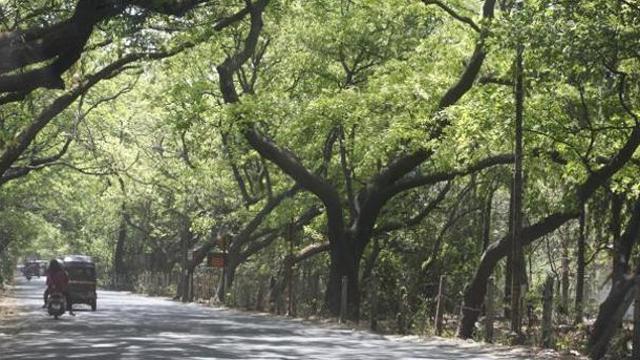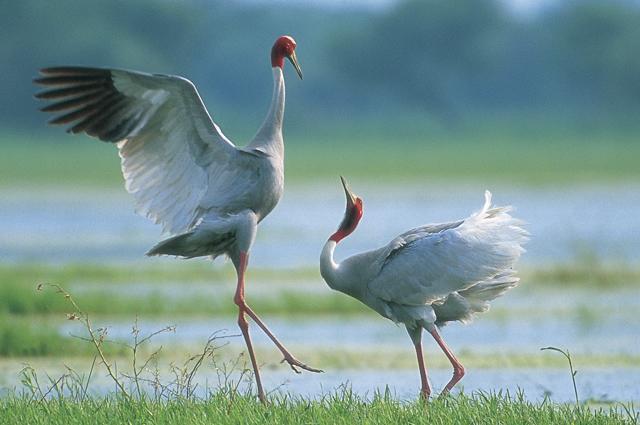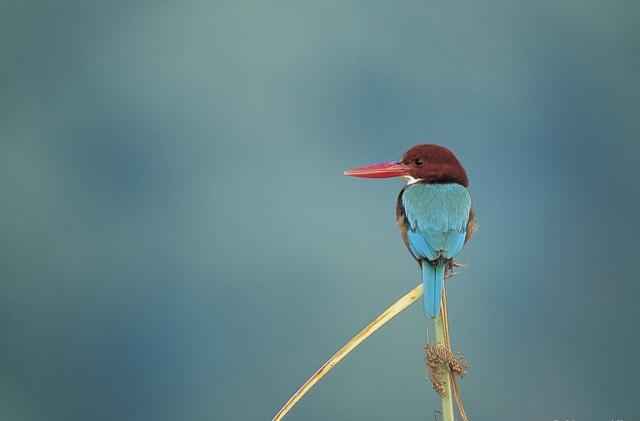Man vs wild: Story behind award-winning leopard image by Mumbai photographer
Nayan Khanolkar’s remarkable portrait of an urban Mumbai leopard has won him a Wildlife Photographer of the Year prize
Nayan Khanolkar’s remarkable portrait of an urban Mumbai leopard has won him a coveted Wildlife Photographer of the Year prize. And he has one hell of a back story

It’s dark. It looks like the steps leading to a rural hutment. The walls have yellow flowers painted on them. Next to the house is a narrow corridor leading up a slope. There are no humans around.
When you see the image, though, you’re unlikely to notice these details. For, on the left of the frame is a prowling leopard. It looks straight into the camera, as if fully aware of the contraption and what it does. Its right leg is in front, creating a sense of motion, as though it’s walking towards you. What’s remarkable is that the animal looks at ease in the human settlement. Not concerned of being caught, or attacked.
“It’s an urban leopard — one that has grown up around human beings, and adapted to the ecosystem of the city,” says wildlife photographer Nayan Khanolkar (42), the photographer who shot the image.

Titled The Alley Cat, the image won Khanolkar the prestigious Wildlife Photographer of the Year award (Urban category), in a contest organised by the Natural History Museum, London, and BBC Wildlife.His was declared the winning photograph, having beaten 50,000 other entries. It’s currently on display at the museum in London.
A Dombivli resident, Khanolkar is a conservation photographer. The Alley Cat is from his photo series — the Urban Leopard Project (ULP) — an observational study that Khanolkar undertook in 2013, with the idea of debunking the stereotype of leopards being aggressive creatures.
Into the urban forest
Khanolkar’s prior work primarily consisted of bird photography. His first brush with wildlife was through the ULP. He struck upon the idea in 2011, when images of a tribal mob burning a leopard alive at Jim Corbett National Park, Nainital, Uttarakhand, surfaced.
Read more: From the Rig Veda to Ruskin Bond: the history of nature writing in India

But the incident that finally led to the project took place closer home. In 2013, a seven-year-old boy, Prakash Salunkhe, was attacked inside Aarey Colony, on the outskirts of Sanjay Gandhi National Park (SGNP). “Media reports followed, of demands that the leopards be relocated to forests away from human civilisation,” says Khanolkar.
But, the reality, according to Khanolkar, was different. In an interview with the family whose house features in The Alley Cat, Khanolkar discovered that a young boy, like Salunkhe, was attacked by a leopard. But, the family harboured no ill feelings for the feline creature. “The father of the boy said that the leopard that attacked his son did not belong to Goregaon — it had strayed from elsewhere, and was lashing out due to its unfamiliarity with the area,” says Khanolkar.
An incredible bit of empathising, you’d think. But “The family has been a resident of Aarey since 1995, and is able to identify the usual leopards in the area,” says Khanolkar. As members of the indigenous Warli tribe, they’ve achieved harmony with the animals over the years. So much so, that there is a painted leopard temple inside the house.
Near-human intelligence
To investigate this symbiotic relationship between the human and leopard neighbours, Khanolkar placed trap cameras across SGNP, customised with motion sensor triggers that captured the slightest movement in their field of vision. And after a rigorous two-year endeavour, Khanolkar recorded case studies of two female leopards — Luna and Chandni.
Luna’s story is the cornerstone of the project: a leopard born inside SGNP that is at home in the urban environment. She studies where humans roam during the day, and accordingly ventures out at night. She has marked a man-made waterhole as her source of drinking water, and even has customised its food habit: stray dogs and pigs found in SGNP. Humans feature nowhere in her protein diet.
For Khanolkar, the most interesting find in the two years was Luna’s gradual ease with the camera. “She got used to the cameras, and the feeling of being watched. She accepted it as part of her ecosystem,” he says.
Read more: It’s birdwatching season: Get your binoculars and field guides ready

The bigger message
Debunking the aggressive image of leopards is not Khanolkar’s only aim. He also wants to generate awareness of the ill effects of unplanned urbanisation. For instance, Khanolkar says that as many as 43 leopards have died due to road accidents over the last decade.
A majority of these accidents have occurred on the stretch between Ghodbunder village, Thane and Vasai, near Tungareshwar Wildlife Sanctuary. “The convenience of Ghodbunder Road notwithstanding, to have a major, and busy highway flanked by forested territory on both sides, is a threat to the leopards,” says Khanolkar.
In light of a BBC report that says the world wildlife population has fallen 58% in 40 years, conserving the existing species should be a priority. “Mumbai has already lost its tigers. The last urban tiger was photographed in 1933 near Vihar Lake, Borivali. We may yet be able to save our leopards if we act sensitively,” says Khanolkar.
Log in: To see the entire Urban Leopard Project photo series, visit nayankhanolkar.com






